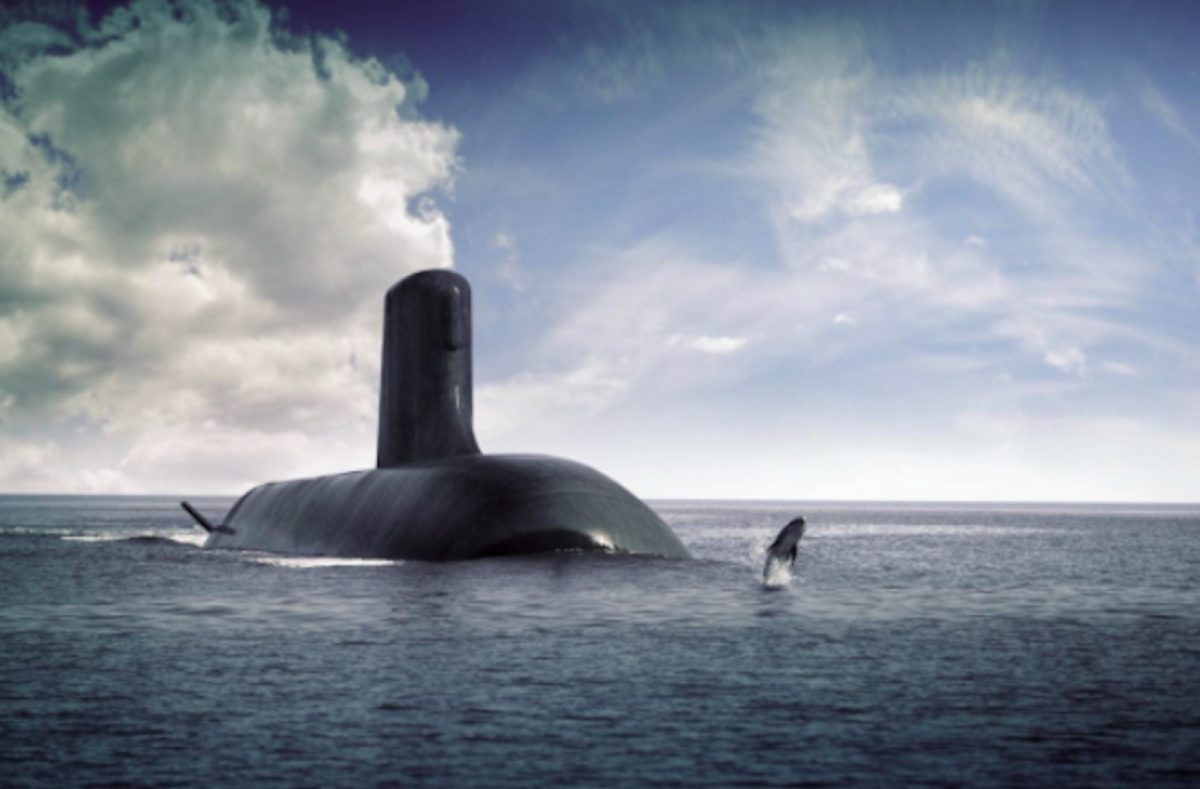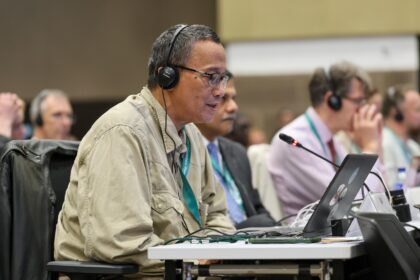[ad_1]
SYDNEY – The Australian government is driving past the last off-ramp to its controversial A$90 billion (US$69.1 billion) deal to build 12 large conventional submarines at a local yard after assurances made by the designer, Naval Group of France, about work for Australian contractors.
At the same time, calls are growing louder in defense circles for some of the later submarines in the program to be nuclear-powered, in order to reduce the transit times in patrolling the ocean reaches around Australia and to better reach potential conflict zones in Northeast and Southeast Asia.
A three-week visit last month by Naval Group’s global chief executive, Pierre-Eric Pommellet, appears to have headed off an implicit threat by Australian Prime Minister Scott Morrison to scrap the deal and look for another design.
Early this year, Morrison appointed the Australian Defense Force joint capabilities chief, Vice Admiral Jonathan Mead, and submarine expert Phillip Stanford, a former navy officer, to look at alternatives to the French design as well as ways of extending the life of the Royal Australian Navy’s (RAN) six existing Collins-class submarines.
The oldest of the 3,200-tonne Collins-class boats is due to end its service life in 2026, eight years before the first of the new French-design becomes operational, and others will follow at intervals out to 2055, leading to a “capability gap†in Australian defenses.
The French design was the surprise choice when announced in 2016 out of a field of three under consideration. The projected boat, named the Shortfin Barracuda, is a conventionally powered version of the Barracuda nuclear attack submarine being built by Naval Group (formerly DCNS) for the French navy.
At 4,500-tonnes it is larger than the 4,000-tonnes specified in the limited tender, and as a derivative of a nuclear design has led to speculation whether a conventional power source could support the systems that would be brought over from the original nuclear design.
There were also doubts about whether the United States would be willing to share submarine technology with the French.
The assumed favorite in the tender was a proposed 4,000-tonne boat called the Type 216 from the German shipbuilder Howaldtswerke-Deutsche Werft. An outside chance was given to a version of Japan’s Soryu-class, an ultra-quiet 2,900-tonne boat in service since 2009 that recently includes the first lithium-ion batteries put into a submarine and includes advanced metallurgy allowing it to dive extremely deep.
However, the Barracuda’s unique pulse-jet propulsion, instead of a propellor, seems to have been the clincher for the RAN because of its quietness across a wide acoustic spectrum and because it offered a faster cruising speed.
The A$50 billion bill (in constant 2016 dollars, expected to end up around $90 billion) was accepted amid rising concern about the intensifying naval contest between China and US-led alliances in the Western Pacific.
The new submarines will have a range of 18,000 nautical miles without replenishment, a top speed under water of over 20 knots, and a variety of US-model torpedoes, mines, and missile armaments with a combat-system installed by Lockheed Martin.
The problem is the long lead time. After years of design work by French and Australian teams at Cherbourg and revamping of the shipyard in Adelaide that built the Collins-class, the first metal will be cut in 2022 and the first boat will enter the water in 2032 and be ready for service in 2034. The last of the 12 will enter service in 2055.
By contrast, Singapore placed its first order for a HDW Type 218 in 2013 and the 2,200-tonne boat built in Germany is now undergoing sea trials, with two more to follow. South Korea started its own indigenous Dosan Ahn Changho-class program in 2012 with the first 3,300-tonne boat, equipped with vertical launch tubes for cruise missiles, now undergoing sea trials.
Exiting the contract with Naval Group would be expensive, costing over A$300 million in penalties on top of the A$1.7 billion Canberra has already spent on its own side of the evaluation and the waste of five years.
That threat has apparently been averted, with Canberra believing it can hold Naval Group to its pledge that at least 60% of the project’s cost would be spent in Australia.
Its Defense Department says the agreement with Naval Group will be updated periodically to ensure this happens by maintaining “the balance between incentives and remedies.†As well as coming from Naval Group itself, this has been pledged by the French armed forces minister, Florence Parly.
“We are committed to 60% (spent in Australia) as a minimum on the project,†Naval Group’s Pommellet told reporters at the end of his visit. “That is my commitment as CEO of the company and it is the commitment of Naval Group.â€
However, the agreement is still “in principle†with lawyers studying the arrangement before it is signed off by government ministers. Previously, it was only after delivery of the last submarine that Naval Group would face any financial penalty for falling short of the target. Now, rewards or penalties will apply at each stage of work for beating or failing the 60%.
“We are getting close,†Pommellet said about signing the new contract. “We’ve made very good progress.â€
Others are not so sure. “A deal is still not done and Labor has concerns that the Morrison government will use tricky accounting to achieve this new target of ‘60% local spend’,†said shadow defense minister Brendan O’Connor of the Australian Labor Party opposition.
While getting the submarines built in Australia is asserted as necessary for “sovereign†capability – something not seen as essential for the equally large and contentious purchase of America’s F-35 Lightning for the Royal Australian Air Force – politics also played a large part, helping the ruling conservative Liberal-Nationals coalition hang on to seats in South Australia.
Admiral Mead’s inquiry is now likely to focus on extending the life of each Collins-class boat by 10 years, possibly in consultation with the Swedish shipbuilder Saab-Kockums, which had been involved in the Collins program in the 1980s and 1990s.
Partly based on its work for the RAN, Saab-Kockums is building the 1,900-tonne Blekinge-class submarine for the Swedish navy and is offering it to the Dutch navy to replace its four 2,300-tonne Walrus-class boats, which are of similar vintage and capability to Australia’s Collins-class.
Meanwhile, debate swirls around the role and relevance of the Shortfin-Barracuda. One school of thought stresses urgency in getting a replacement for the Collins-class in operation, even if it means a less ambitious “off-the-shelf†design built overseas.
Some argue the RAN could still operate in forward positions close to adversary home ports and in seaway “choke-points†with smaller submarines, operating out of allied bases in Guam, Singapore or Japan. Others say the RAN is captured by its Cold War mythology, from when its British-built Oberon-class submarines lurked on intelligence-gathering missions close to Vladivostok, Shanghai and Haiphong – a role now superseded by satellites.
At a maritime conference in 2019, RAN chief Vice Admiral Mike Noonan suggested that the slow build of 12 boats might allow nuclear propulsion to be considered at a later stage. “A change in the propulsion system for the Attack-class submarines – it’s something that will no doubt be discussed over the next 30 years, bearing in mind that by the time we deliver no. 12 it will be 2055,†he said
The government quickly countered that this was not under consideration, but in a paper on submarines published last November by the partly Defense Department-funded Australian Strategic Policy Institute, the question was under serious discussion.
“The strategic ground is changing quickly under our feet, and those developments might, in future, force a more urgent government consideration of the submarine capability Australia needs,†wrote ASPI head Peter Jennings.
“A significant pressure point may emerge in the next couple of years, when the detailed design work for the Attack class will reveal the capability parameters of the boats’ propulsion system,†Jennings said. “How that plays out against the advertised need for a ‘regionally superior submarine’ could lead to some arresting discussions around the cabinet table.â€
While it’s commonly stated that a country would need a civil nuclear power industry to support a nuclear propulsion capability, the Submarine Institute of Australia – a non-government association of shipbuilding and naval experts – has said this is not the case, though it would take at least 15 years to build up the necessary nuclear engineering expertise and support systems, and require cooperation from the US, Britain or France (which would have to supply the near weapons-grade cores for the reactors).
It would also require the Australian public to get over its antipathy to nuclear energy in any form, despite already having a small reactor to make medical isotopes, having a uranium export industry, and relying ultimately on the US nuclear umbrella for defense. That French nuclear testing in the Pacific added to this antipathy would be another irony.
[ad_2]
Source link













